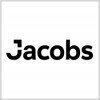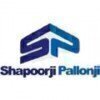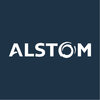
Filter interviews by
Gulf Spic General Trading & Contracting Company Interview Questions, Process, and Tips
Gulf Spic General Trading & Contracting Company Interview Experiences
8 interviews found
(2 Questions)
- Q1. What are the types of valve
- Ans.
Types of valves include ball valves, gate valves, globe valves, butterfly valves, and check valves.
Ball valves: used for on/off control without pressure drop
Gate valves: used for full flow or no flow applications
Globe valves: used for regulating flow in pipelines
Butterfly valves: used for throttling flow
Check valves: used to prevent backflow
- Q2. Draw something isometric drawing by hand
- Ans.
I will draw an isometric drawing of a simple cube.
Start by drawing a square as the base of the cube
Draw lines extending from the corners of the square at a 45 degree angle
Connect the lines to form the sides of the cube
Add shading to give the drawing a 3D effect
Interview Preparation Tips
Draughtsman Mechanical Interview Questions asked at other Companies
(2 Questions)
- Q1. How many types valves
- Ans.
There are several types of valves used in mechanical systems for controlling the flow of fluids or gases.
Gate valves
Ball valves
Butterfly valves
Check valves
Globe valves
Needle valves
- Q2. What are the pipe types
- Ans.
Pipe types include steel, copper, PVC, PEX, and galvanized.
Steel pipes are commonly used for high-pressure applications.
Copper pipes are durable and resistant to corrosion.
PVC pipes are lightweight and easy to install.
PEX pipes are flexible and suitable for hot and cold water systems.
Galvanized pipes are coated with zinc to prevent rusting.
Interview Preparation Tips
Draughtsman Mechanical Interview Questions asked at other Companies
I applied via Walk-in

(2 Questions)
- Q1. Draw the single line diagram
- Ans.
A single line diagram is a simplified representation of an electrical power system.
A single line diagram shows the main components of the system and their interconnections.
It is used to visualize the flow of power and to identify potential problems.
The diagram typically includes generators, transformers, switchgear, and loads.
Each component is represented by a symbol and labeled with its rating and other important info...
- Q2. Electrical field experience like aske
(2 Questions)
- Q1. What are your salary expectations?
- Q2. What is your family background?
Interview Preparation Tips
Electrical Draftsman Interview Questions asked at other Companies
I applied via Company Website and was interviewed before Mar 2023. There was 1 interview round.
(1 Question)
- Q1. Specify code for SS pipe used for oil and gas projects
- Ans.
ASTM A312 is the code for SS pipe used in oil and gas projects
ASTM A312 is the standard specification for seamless, welded, and heavily cold worked austenitic stainless steel pipes
It covers grades such as TP304, TP316, TP321, etc.
These pipes are commonly used in oil and gas projects for their corrosion resistance and high temperature strength
Interview Preparation Tips
Project Engineer Mechanical Interview Questions asked at other Companies
Gulf Spic General Trading & Contracting Company interview questions for popular designations
I applied via Company Website and was interviewed in Aug 2021. There were 5 interview rounds.
Interview Questionnaire
5 Questions
- Q1. N G R wat is working electrical subeastesan
- Ans.
NGR is a Neutral Grounding Resistor used in electrical substations to limit the fault current.
NGR limits the fault current in electrical substations.
It is used to protect the equipment from damage during a fault.
NGR is connected between the neutral point of the transformer and ground.
It is designed to have a high resistance value to limit the current flow.
NGR is an important component in the electrical system and its p...
- Q2. Water Motor pump automatically generated in which presr .
- Ans.
The question is unclear and lacks context.
The question needs to be rephrased or clarified.
It is unclear what 'presr' refers to.
More information is needed to provide an accurate answer.
- Q3. Tarn farmer 11 / kv .&0.440 kv who mach oil BDB value.
- Q4. UPS working in defneasan
- Ans.
UPS working in defneasan
I'm sorry, I don't understand the question. Could you please rephrase it?
Can you provide more context or information about 'defneasan'?
UPS stands for Uninterruptible Power Supply, which provides backup power in case of power outages.
Maintenance and commissioning of UPS systems is important to ensure their proper functioning.
Regular testing and inspection of UPS systems can help prevent failures
- Q5. Battery use in oil & gas endstrial .
- Ans.
Batteries are used in oil & gas industry for backup power and emergency shutdown systems.
Batteries provide backup power to critical equipment in case of power outages.
They are used in emergency shutdown systems to ensure safe shutdown of equipment in case of emergencies.
Batteries are also used in remote locations where power supply is not available.
Examples of batteries used in oil & gas industry include lead-acid batt...
Interview Preparation Tips
I applied via Walk-in and was interviewed before Dec 2021. There were 2 interview rounds.

(2 Questions)
- Q1. Tell about your self
- Ans.
I am a Rotating Equipment Engineer with expertise in designing and maintaining rotating machinery.
I have a Bachelor's degree in Mechanical Engineering.
I have 5 years of experience in the oil and gas industry.
I specialize in centrifugal pumps and gas turbines.
I have successfully led projects to optimize equipment performance and reduce downtime.
I am proficient in using software like AutoCAD and SolidWorks for equipment ...
- Q2. Asking question in documents
Interview Preparation Tips
Know the international standards of all type of pumps and compressors
Rotating Equipment Engineer Interview Questions asked at other Companies
Jobs at Gulf Spic General Trading & Contracting Company
I applied via Recruitment Consultant and was interviewed before Feb 2020. There was 1 interview round.
Interview Questionnaire
2 Questions
- Q1. What do you check when crane is sart work for lifting ?
- Ans.
When a crane is starting work for lifting, the following checks should be performed.
Check the condition of the crane, including any visible damages or defects.
Inspect the lifting equipment, such as slings, hooks, and chains, for any signs of wear or damage.
Verify that the load to be lifted is within the crane's capacity and properly secured.
Ensure that the area around the crane is clear of any obstacles or personnel.
Co...
- Q2. What did you check in Scaffolding?
- Ans.
As a Safety Supervisor, I check various aspects of scaffolding to ensure safety.
I check the stability of the scaffolding structure to ensure it is properly erected and secured.
I inspect the scaffolding components, such as planks, braces, and guardrails, for any damage or defects.
I verify that the scaffolding is properly assembled and meets the required standards and regulations.
I assess the load capacity of the scaffol...
Interview Preparation Tips
Safety Supervisor Interview Questions asked at other Companies
I appeared for an interview in Nov 2017.
Interview Preparation Tips
Skills: Communication, Analytical Skills, Leadership, Decision Making Skills
Duration: 1-3 Months
Electrical Engineer Interview Questions asked at other Companies
Top trending discussions






Interview questions from similar companies

I applied via Company Website and was interviewed in Jun 2021. There was 1 interview round.
Interview Questionnaire
1 Question
- Q1. Talk about yourself
- Ans.
I am a skilled Draughtsman Mechanical with experience in creating detailed technical drawings and designs.
Proficient in using CAD software such as AutoCAD and SolidWorks
Strong understanding of mechanical engineering principles
Ability to interpret and translate complex technical specifications into accurate drawings
Experience in collaborating with engineers and other professionals to ensure design accuracy
Knowledge of i...
Interview Preparation Tips

I applied via Recruitment Consulltant and was interviewed before Jun 2021. There was 1 interview round.
(1 Question)
- Q1. Discussion about Past experience and projects. Relaxed atmosphere. Normal interview
Interview Preparation Tips
Gulf Spic General Trading & Contracting Company Interview FAQs
Tell us how to improve this page.
Gulf Spic General Trading & Contracting Company Interviews By Designations
- Gulf Spic General Trading & Contracting Company Draughtsman Mechanical Interview Questions
- Gulf Spic General Trading & Contracting Company Electrical Draftsman Interview Questions
- Gulf Spic General Trading & Contracting Company Electrical Engineer Interview Questions
- Gulf Spic General Trading & Contracting Company Safety Supervisor Interview Questions
- Gulf Spic General Trading & Contracting Company Project Engineer Mechanical Interview Questions
- Gulf Spic General Trading & Contracting Company Rotating Equipment Engineer Interview Questions
Interview Questions for Popular Designations
Gulf Spic General Trading & Contracting Company Interview Process
based on 4 interviews
Interview experience
Interview Questions from Similar Companies
Gulf Spic General Trading & Contracting Company Reviews and Ratings
based on 161 reviews
Rating in categories
|
Piping Designer
26
salaries
| ₹2.1 L/yr - ₹12 L/yr |
|
Piping Design Engineer
17
salaries
| ₹7.9 L/yr - ₹29.3 L/yr |
|
Electrical Design Engineer
16
salaries
| ₹5.8 L/yr - ₹24 L/yr |
|
Electrical Designer
13
salaries
| ₹6 L/yr - ₹18 L/yr |
|
Mechanical Engineer
12
salaries
| ₹9.5 L/yr - ₹15 L/yr |

Megha Engineering & Infrastructures

Shapoorji Pallonji Group

Alstom Transportation

Tata Technologies
- Home >
- Interviews >
- Gulf Spic General Trading & Contracting Company Interview Questions












